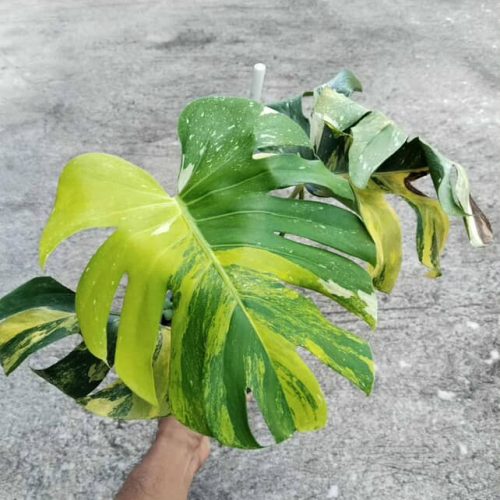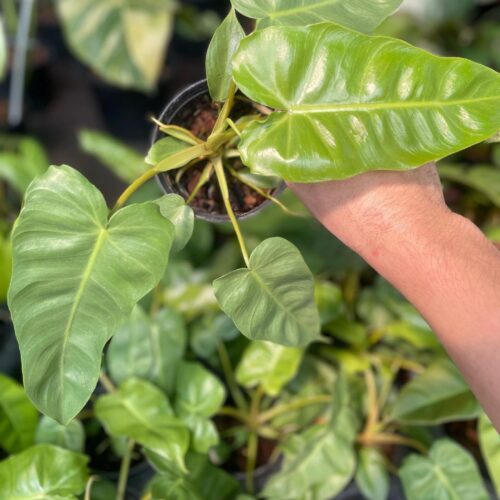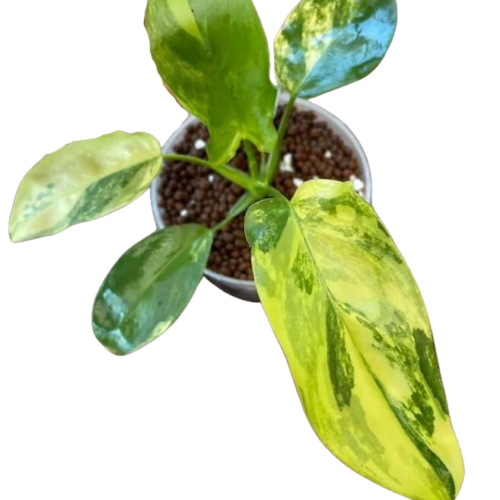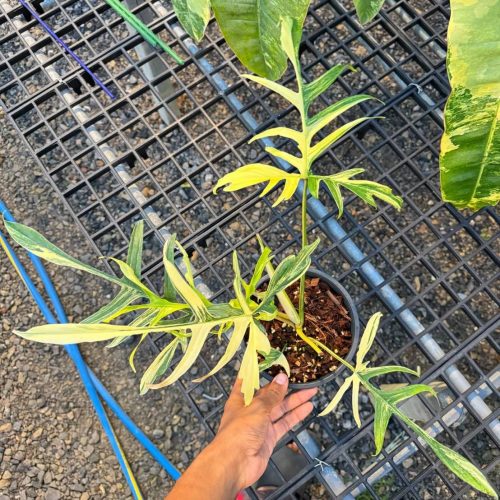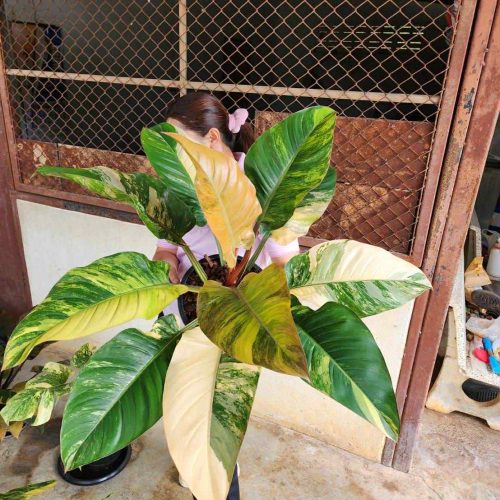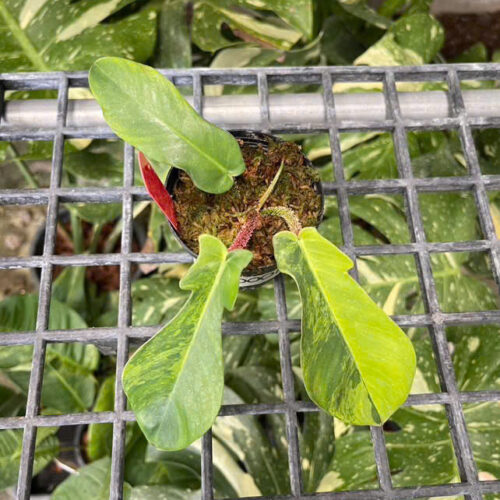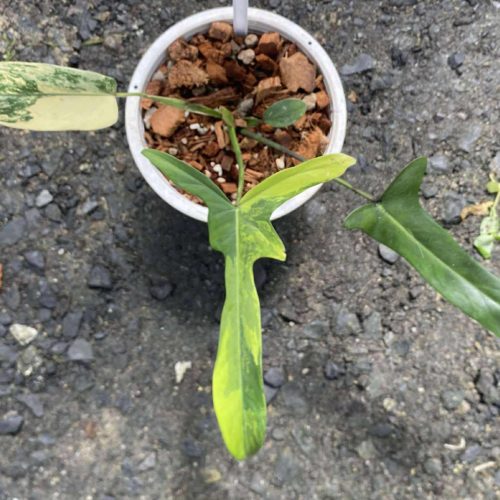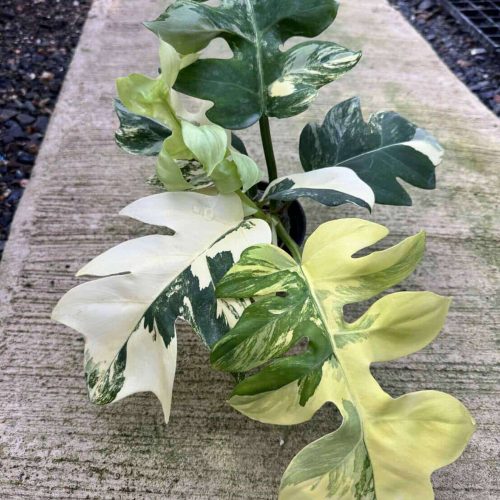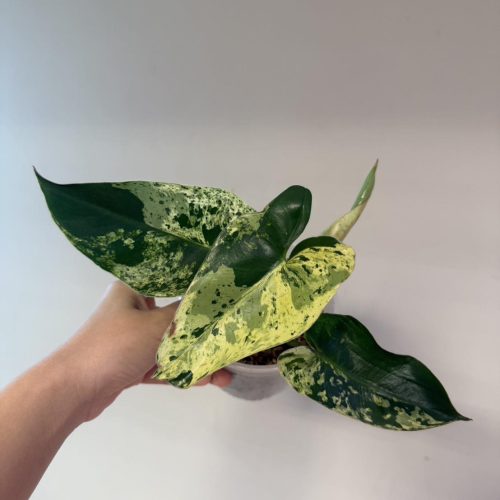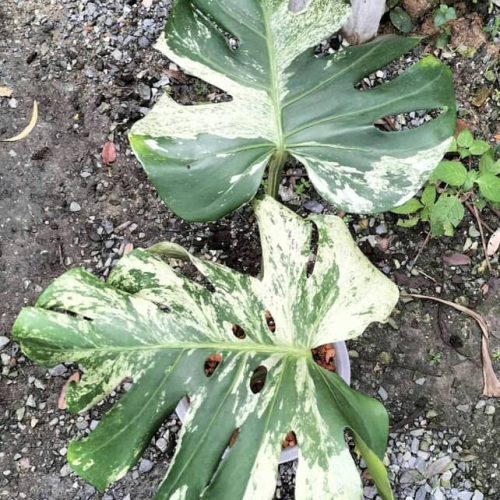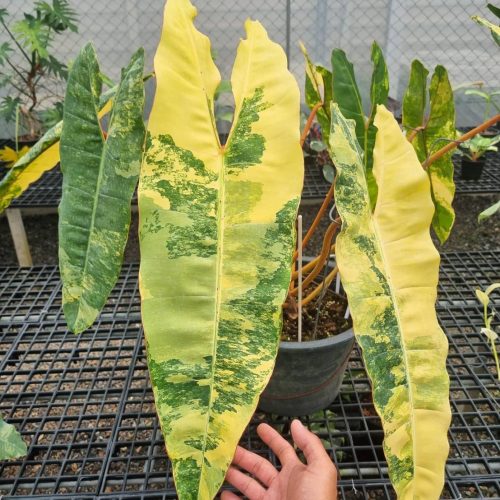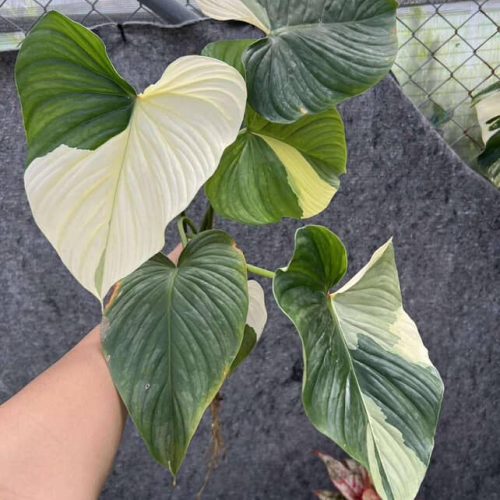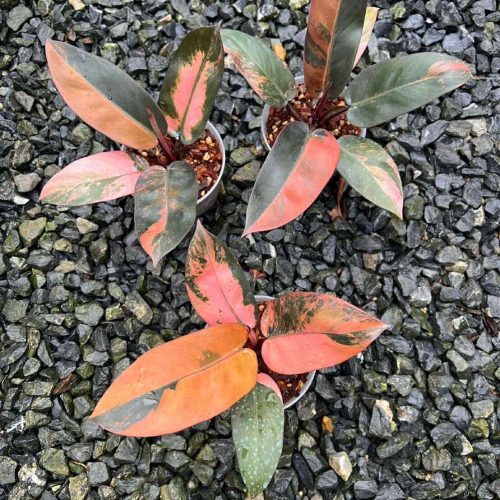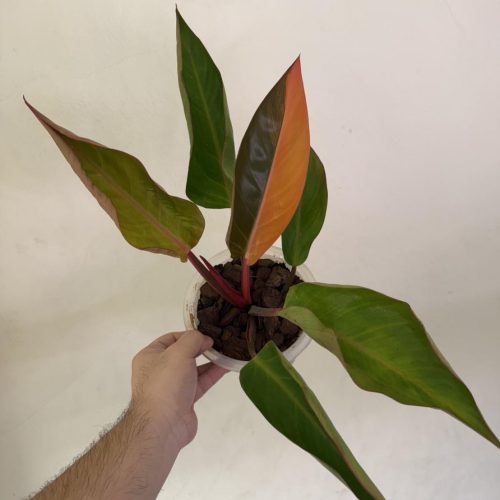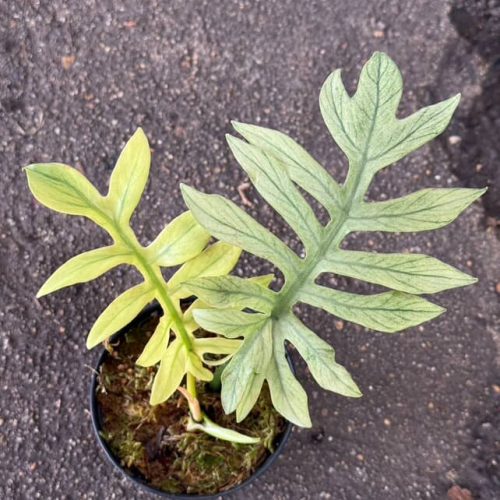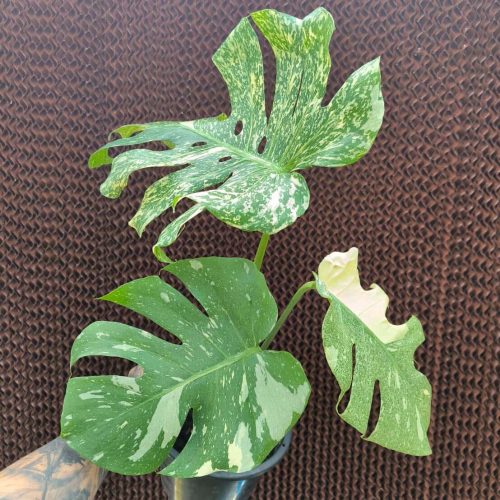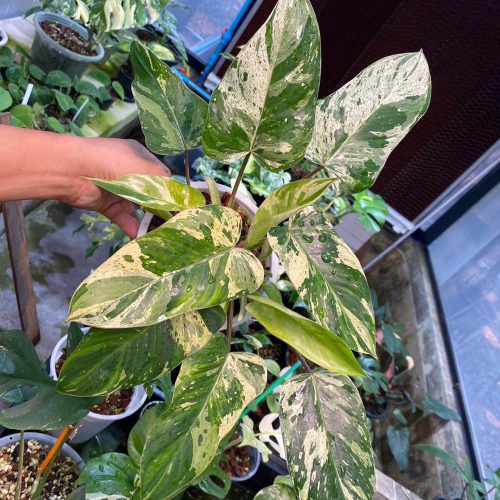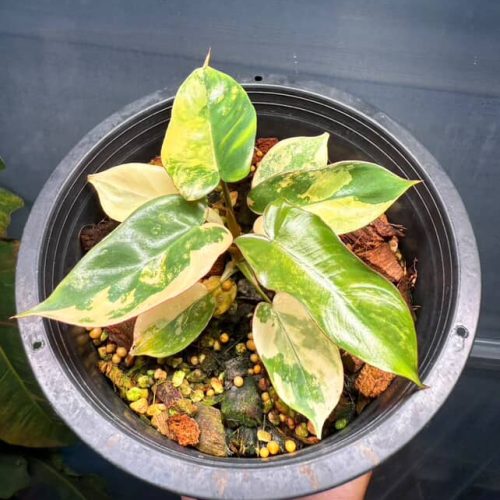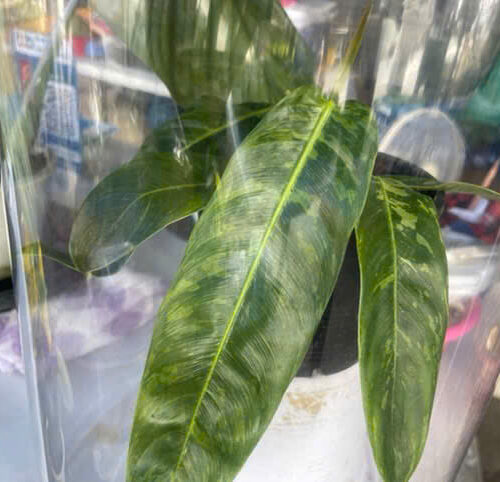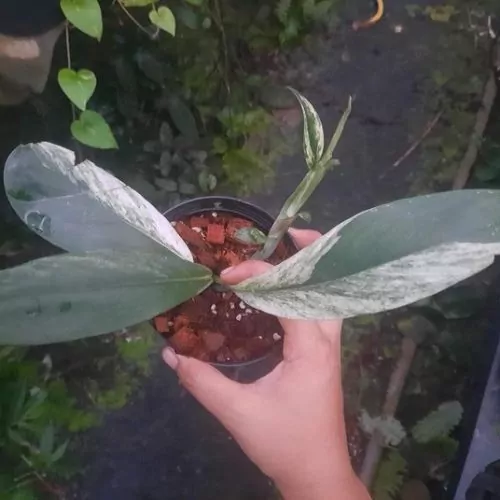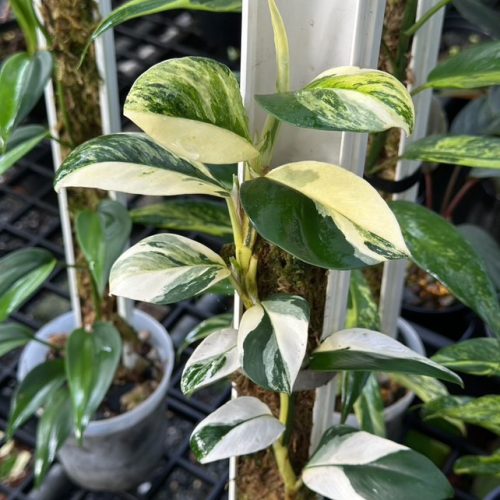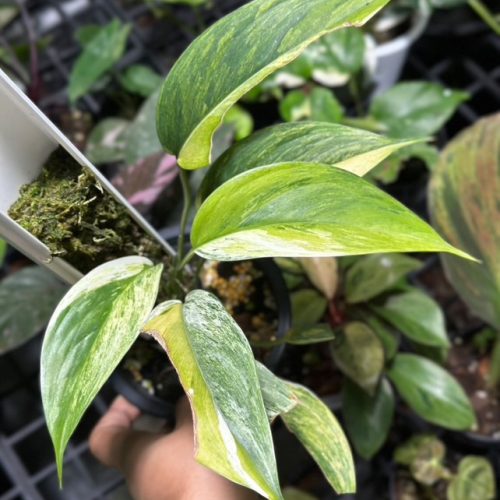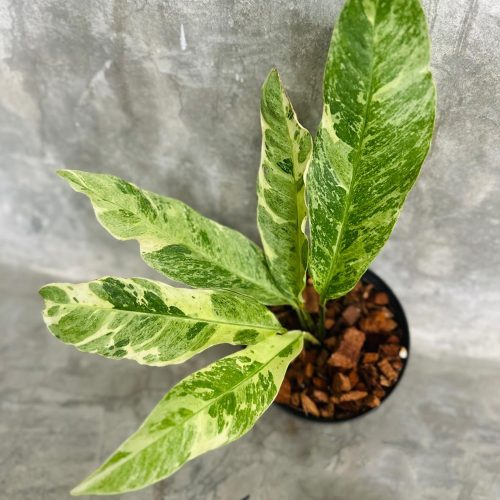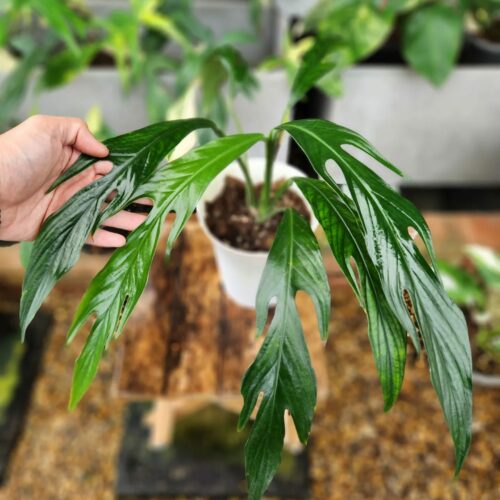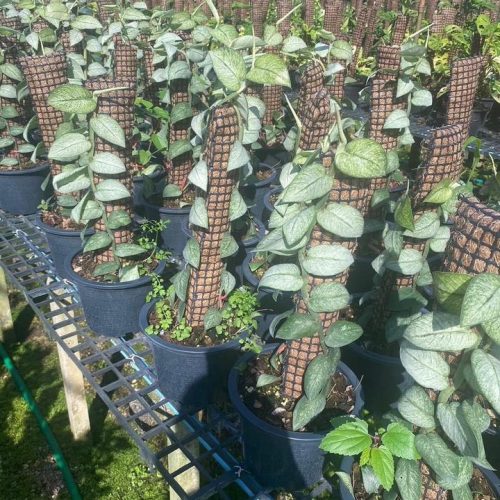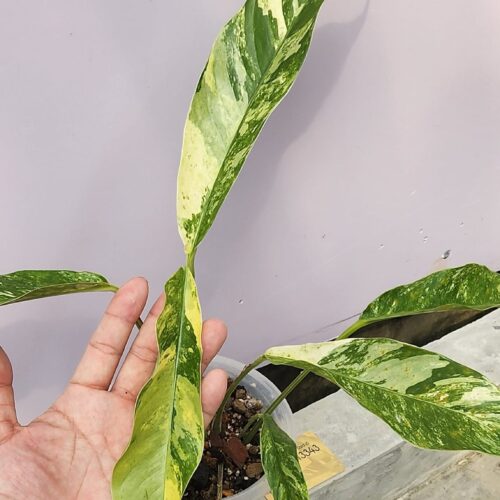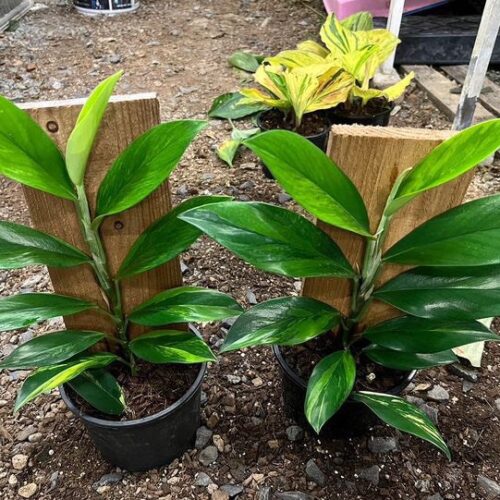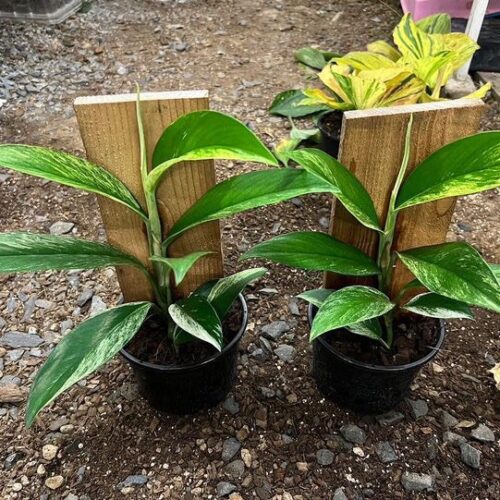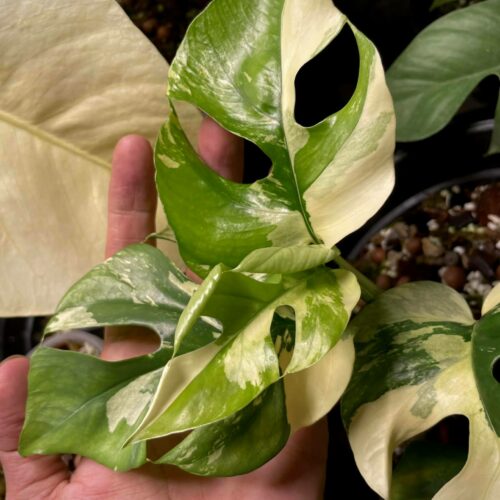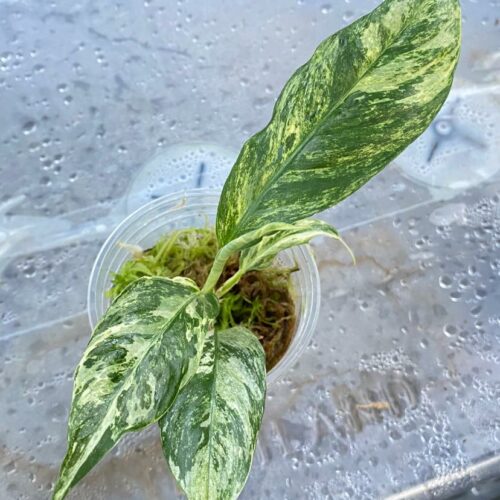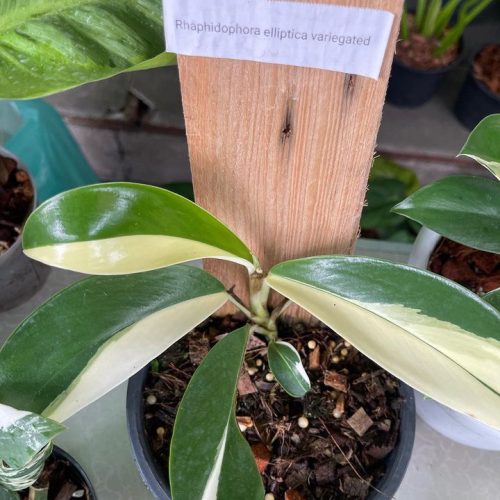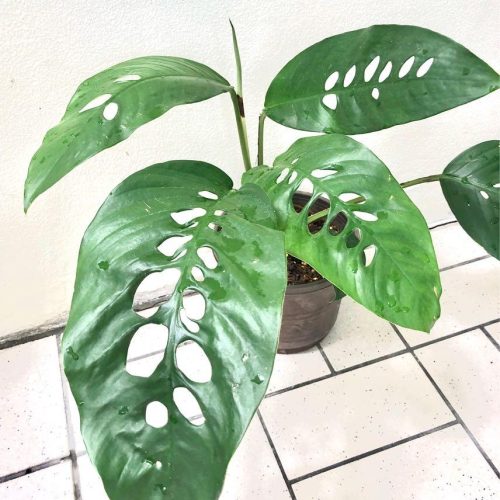Philodendron Paraiso Verde is a tropical plant known for its striking variegated leaves, which display a mix of green, cream, and yellow hues. Its foliage is heart-shaped and can grow quite large, making it a visually appealing indoor plant. To care for it, provide bright, indirect light, regular watering while allowing the soil to dry out slightly between waterings, and maintain a humid environment.
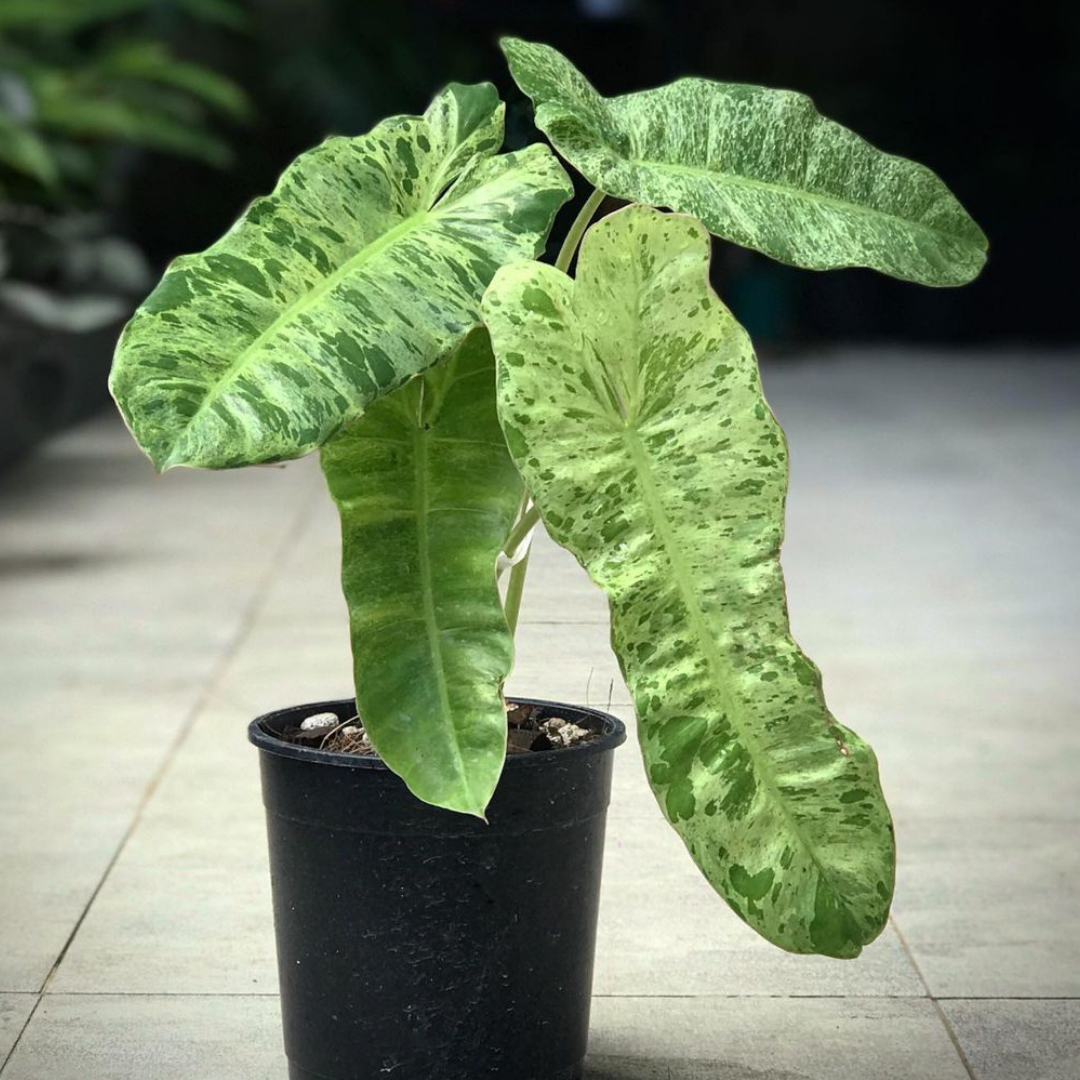
About Philodendron Paraiso Verde
Philodendron Paraiso Verde is a member of the Araceae family and is native to the tropical regions of Brazil, Colombia, Ecuador, and Peru. It is a climbing plant that can grow up to 3-6 feet in height, making it a great choice for hanging baskets or training on a trellis. The leaves of this plant are large, heart-shaped, and can reach up to 12 inches in length. They have a deep green color with prominent veins running through them, giving them a unique and eye-catching appearance. To learn more about the origins and different species of Philodendrons, you can refer to our extensive guide
How to Care for Philodendron Paraiso Verde
Taking care of Philodendron Paraiso Verde is relatively easy, making it a great choice for beginner plant owners. Here are some important care tips to keep in mind:
- Light: Philodendron Paraiso Verde thrives in bright, indirect light. Too much direct sunlight can scorch its leaves, so it’s best to place it in an area with filtered or dappled sunlight. For detailed information on the best lighting conditions for your Philodendron, check out our in-depth guide
- Water: Keep the soil of your Philodendron Paraiso Verde consistently moist but not soggy. Let the top inch of soil dry out before watering again. Overwatering can lead to root rot, so be careful not to water too frequently.
- Humidity: This plant loves humidity and will appreciate being misted regularly. You can also place it on a tray filled with pebbles and water to increase the humidity around it.
- Soil: Use well-draining, rich potting soil for your Philodendron Paraiso Verde. It’s best to repot it every 2-3 years to give it fresh soil and room to grow.
- Fertilizer: Feed your Philodendron Paraiso Verde with a balanced liquid fertilizer once a month during the growing season (spring and summer).
- Pruning: Regularly prune your Philodendron Paraiso Verde to keep it looking full and healthy. Remove any dead or damaged leaves and trim back any leggy stems.
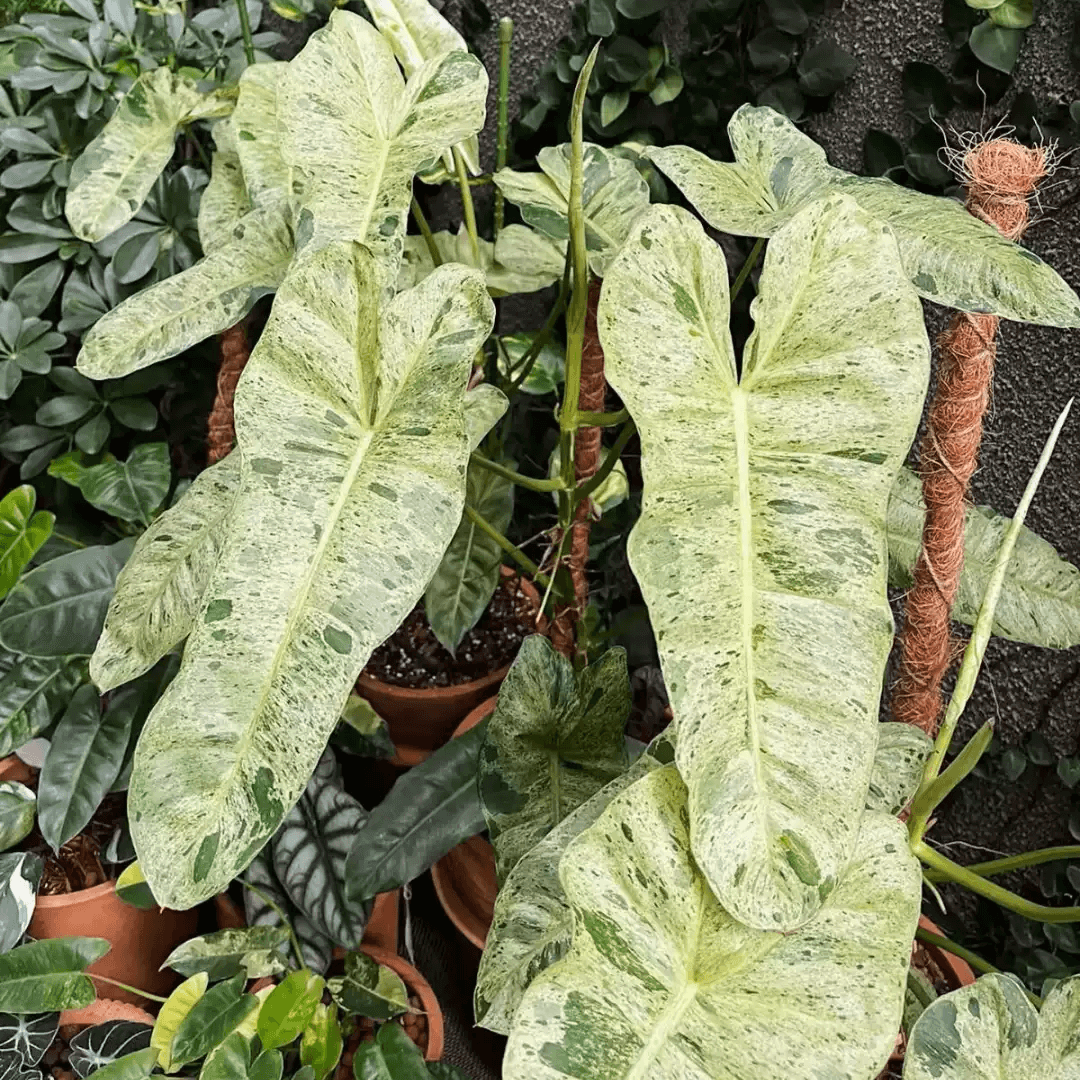
Pros and Cons of Philodendron Paraiso Verde
Philodendron Paraiso Verde has its own set of advantages and disadvantages that you should consider before adding it to your home.
Pros:
- Low Maintenance: As mentioned earlier, this plant is very easy to care for, making it a great choice for busy individuals or those new to plant parenting.
- Air Purifying: Like most plants, Philodendron Paraiso Verde helps to purify the air by removing harmful toxins and pollutants.
- Aesthetically Pleasing: With its large, glossy leaves, this plant adds a touch of exotic beauty to any space.
- Versatile: Philodendron Paraiso Verde can be grown as a hanging plant, climbing plant, or even trained into a tree-like shape. Similar plants like Epipremnum and Monstera are also popular choices for their versatility.
Cons:
- Toxicity: Keep in mind that Philodendron Paraiso Verde is toxic to pets and humans if ingested. Keep it out of reach of children and pets.
- Pruning: While pruning is necessary to keep this plant healthy, it can be a bit challenging due to its size and long vines.
- Limited Availability: Philodendron Paraiso Verde may not be readily available at all plant stores or nurseries, making it harder to find for some individuals.
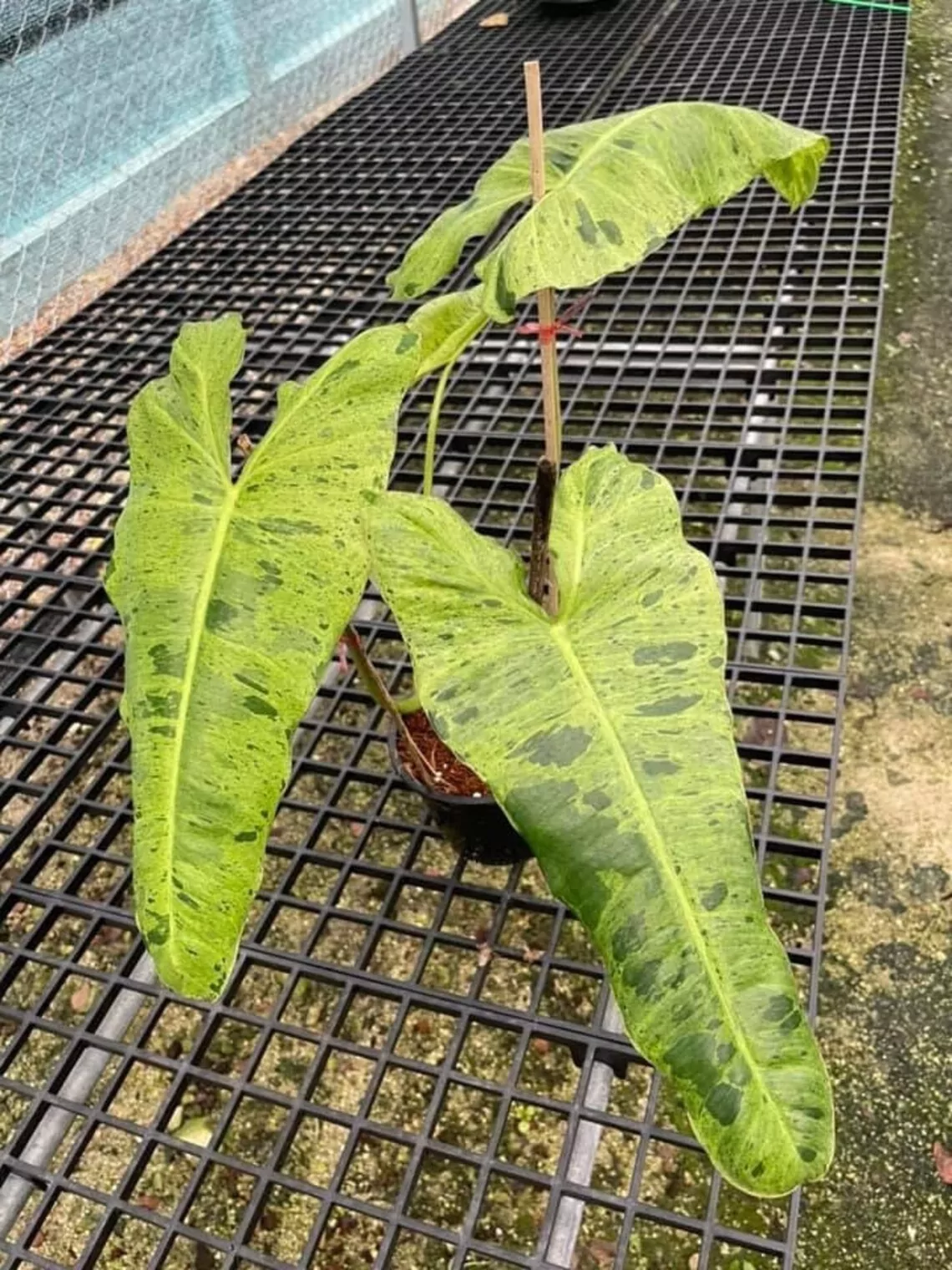
“Discover the Vibrant Beauty of Philodendron Paraiso Verde – Click Here to Embrace Nature’s Masterpiece in Your Home Today!”
Alternatives to Philodendron Paraiso Verde
If you’re unable to find Philodendron Paraiso Verde or simply want to explore other options, here are some alternatives to consider:
- Pothos: This plant is also known for its large, heart-shaped leaves, but it has variegated patterns of green and yellow, making it a visually striking choice.
- Monstera Deliciosa: Another popular tropical plant, Monstera Deliciosa, has similar care requirements to Philodendron Paraiso Verde and is just as beautiful.
- Swiss Cheese Plant: With its unique foliage consisting of holes and splits, the Swiss Cheese Plant makes a great statement piece in any home.
Philodendron species are the most sought after by aroid plant lovers
Step by Step Guide to Propagating Philodendron Paraiso Verde
Propagating Philodendron Paraiso Verde is easy and can be done through stem cuttings. Follow these simple steps for success:
- Choose a healthy stem with at least two leaf nodes (the point where the leaf meets the stem).
- Cut the stem just below the second node using a clean, sharp knife.
- Place the cutting in a jar of water or a pot filled with moist soil. Make sure that the bottom node is submerged in water or buried in soil.
- Keep the cutting in a warm, bright location away from direct sunlight.
- Change the water or mist the soil regularly to keep it moist.
- After a few weeks, you should see roots starting to form. Once the roots are a few inches long, you can transplant the cutting into a pot with well-draining soil. Propagating Philodendron Paraiso Verde is easy and can be done through stem cuttings. To understand more about propagating Philodendrons, see our insights
“Rhaphidophora and Scindapsus are also easy to propagate in a similar manner.”
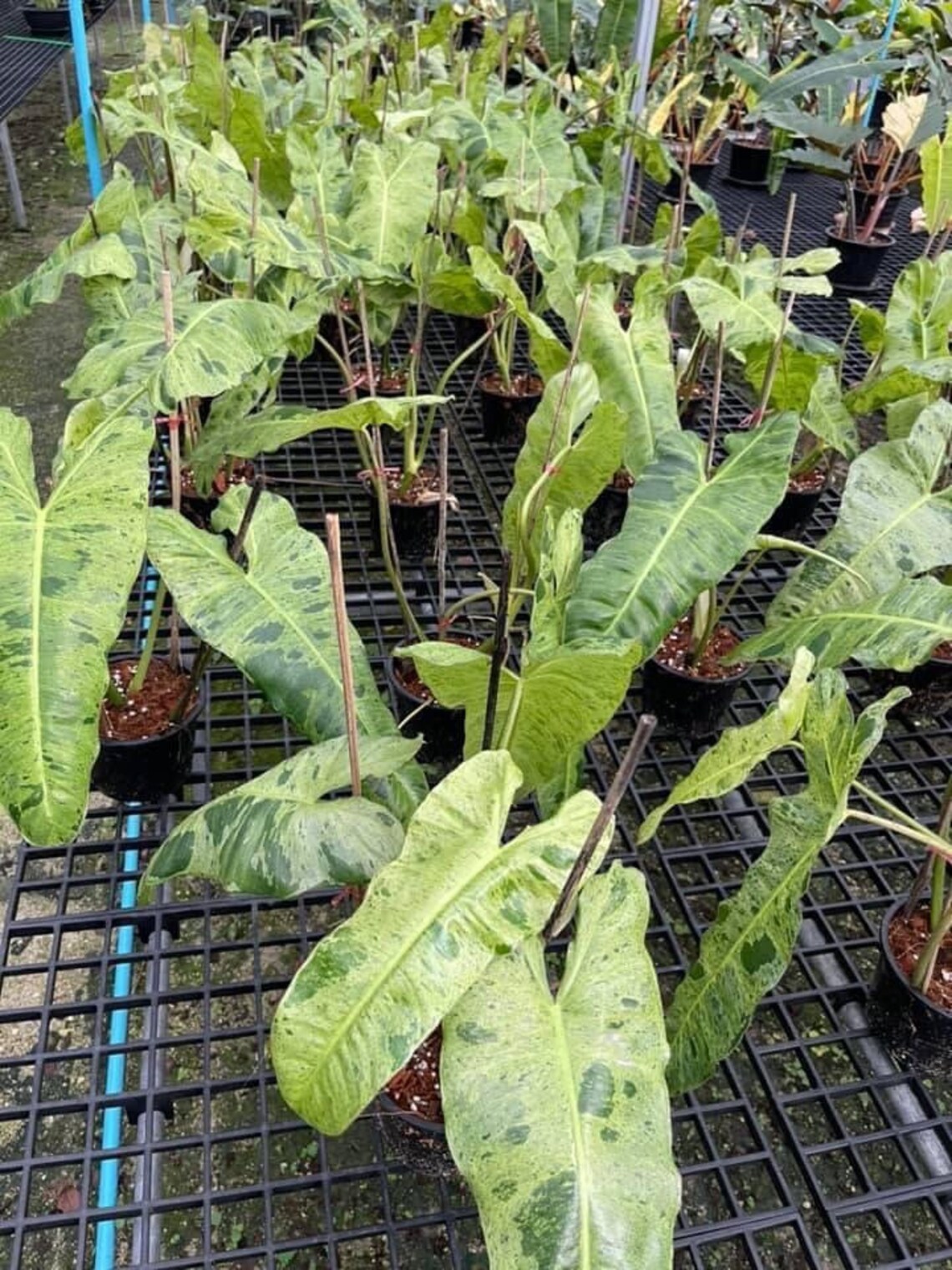
Helpful Tips for Growing Philodendron Paraiso Verde
Here are some additional tips to help you care for your Philodendron Paraiso Verde and keep it looking its best:
- Use a moss pole or trellis to support your plant as it grows taller.
- Rotate your plant every few months to ensure even growth and prevent it from leaning towards the light source.
- Keep your plant away from drafts and cold temperatures, as they can cause damage to its leaves.
- Wipe down the leaves regularly to remove dust and maintain their glossy appearance.
- If your Philodendron Paraiso Verde’s leaves start turning yellow, it may be a sign of overwatering. Adjust your watering schedule accordingly.
- This issue is also common with Aglaonema and Syngonium plants.
FAQs
What is the best location for my Philodendron Paraiso Verde?
As mentioned earlier, this plant loves bright, indirect light. Place it near a window with filtered sunlight for optimal growth.
How often should I water my Philodendron Paraiso Verde?
Water your plant when the top inch of soil feels dry to the touch. This could mean watering once a week in warmer months and less frequently during the winter.
Is Philodendron Paraiso Verde poisonous to pets?
Yes, this plant is toxic to cats, dogs, and humans if ingested. Keep it out of reach of pets and children.
Can I grow Philodendron Paraiso Verde in low light?
While this plant prefers bright, indirect light, it can tolerate lower light conditions. Just make sure that it still receives some natural light throughout the day.
Why are the leaves on my Philodendron Paraiso Verde turning brown?
Brown leaves could be a sign of underwatering, too much direct sunlight, or a lack of humidity. Check your plant’s soil and adjust its care accordingly.
Conclusion
Philodendron Paraiso Verde is a beautiful and easy-to-care-for plant that can bring a touch of the tropics to any space. While it has its pros and cons, its stunning appearance and low maintenance needs make it a popular choice among plant lovers. Use this article as a guide to help you successfully grow and care for your Philodendron Paraiso Verde, and don’t forget to explore some alternatives if you can’t find this particular plant. Happy gardening!

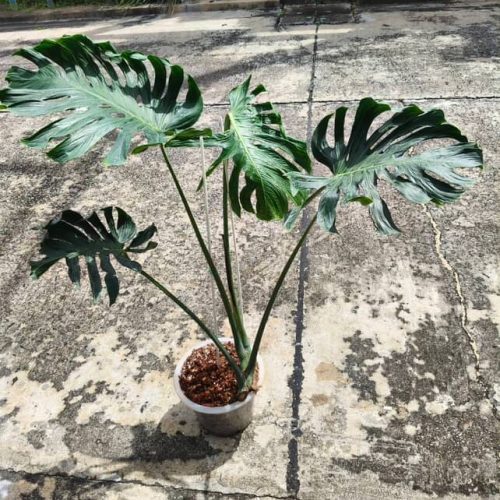
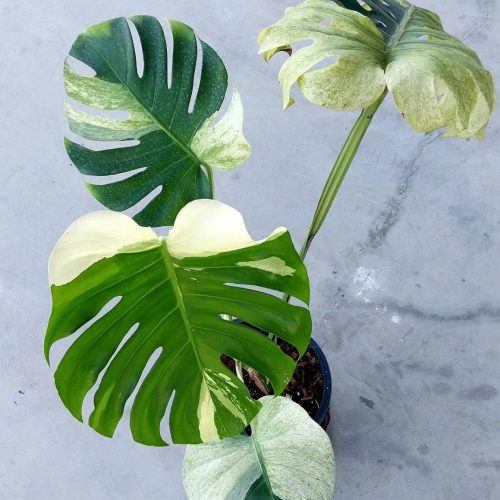



![12x Monstera Borsigiana Albo half leaves variegata [3-4 leaves]](https://greenboog.com/wp-content/uploads/2024/10/Monstera-Borsigiana-Albo-half-leaves-variegata-1-500x500.jpg)
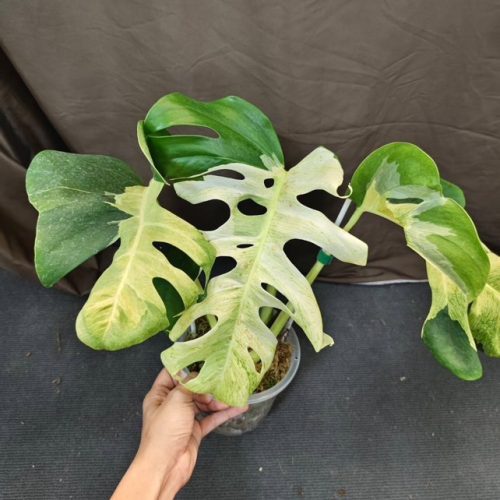

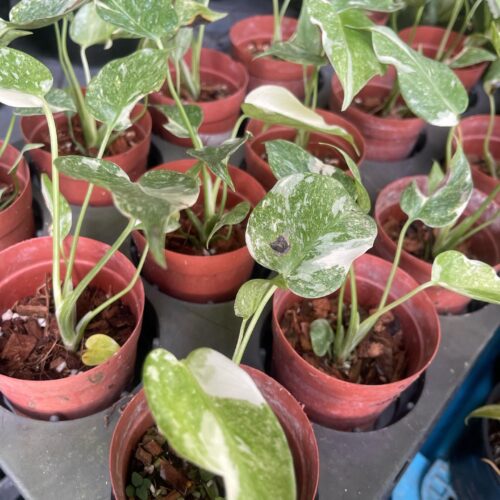
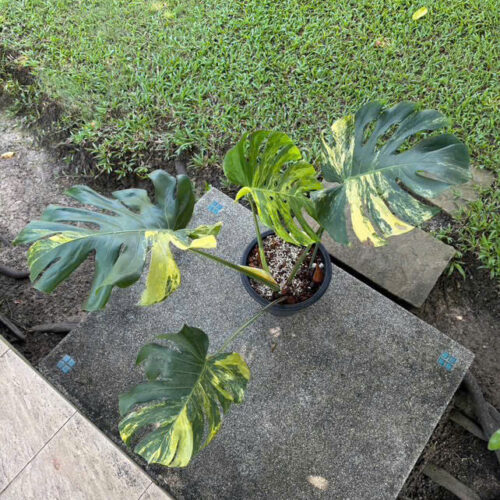
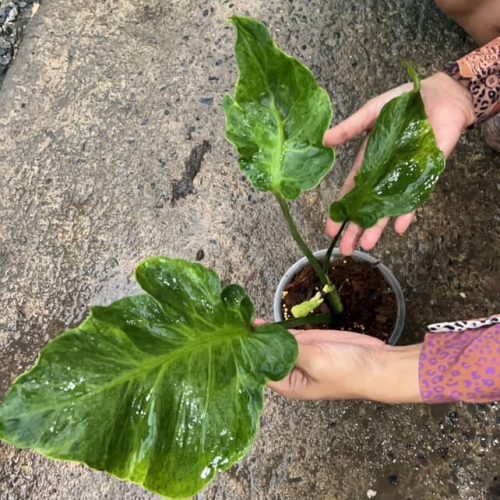
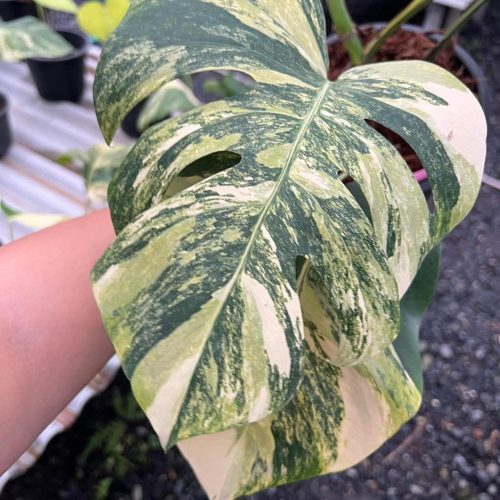

![10 Pots x Monstera Aurea Variegated / Mix Aurea tri color 3-4 leaves [well variegated]](https://greenboog.com/wp-content/uploads/2024/08/Monstera-Aurea-Tri-color-500x500.jpg)
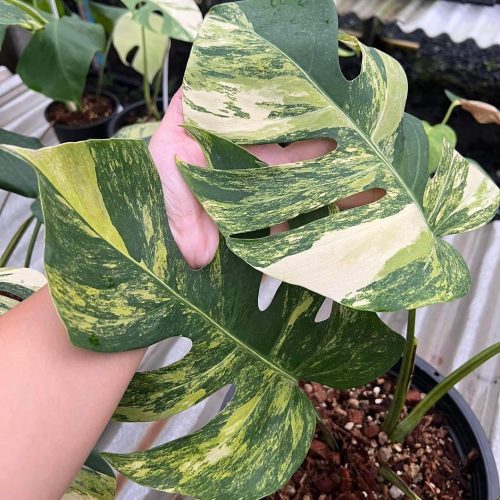
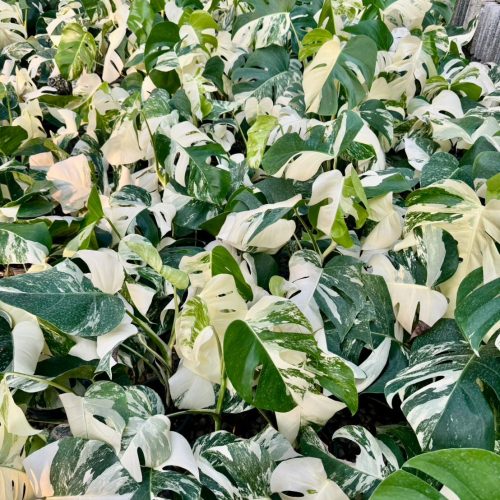
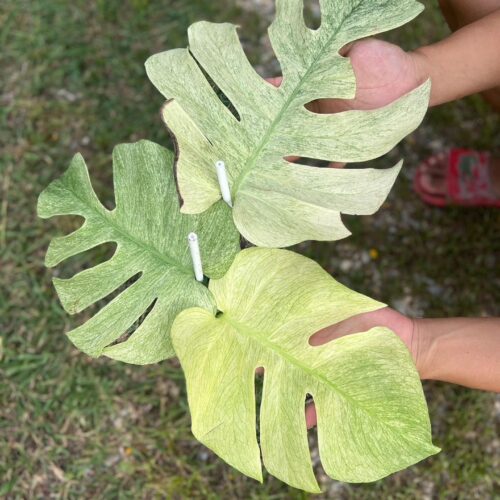
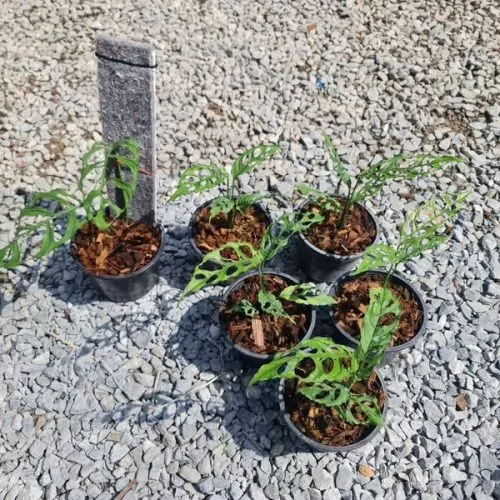
![[SALE] 10 Pots x Monstera Aurea Variegated 3-6 leaves [Medium size]](https://greenboog.com/wp-content/uploads/2025/01/Monstera-Aurea-variegated-4-6-leafs-500x482.jpg)

